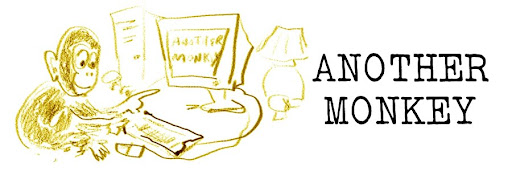Tonight is the first annual International Observe the Moon Night. If you missed it, you could always go out tomorrow night and apply error bars to the date. Observing it means pretty much whatever you want it to: look at it with your naked eyes, use a telescope or binoculars, or do what I did - take photos.
Here's an image I took at 6:37 PM, as I was helping to break down and put away the tables and chairs at a political fundraiser I attended as part of my duties as an elected party committeeman:
This is at what I call the "China Moon" stage, where the bright areas of the Moon match the brightness of the clouds, and the darker areas are close to the same color as the blue sky. Compare the colors to this photo taken just eighteen minutes later:
By now the Sun had started to sink closer to the horizon, and the Moon started to stand out more brightly in the looming twilight.
Venus is getting brighter, thinner, and larger throughout the month of September. I am hoping to be able to image it as a thin crescent sometime before it vanishes into the sunset glare. But last night there was no sign of Venus before or after sunset. Maybe it's hiding behind some of the houses and trees on my Western horizon. So I tried something new tonight: I went up to my second floor bathroom window, lifted up the screen, and tried to see if I could see anything more from up there. No luck. Maybe the attic... Still, while I was up there, I checked out the possibilities for setting up a back yard surveillance camera there, and also decided to snap some photos of the Nanticoke skyline looking West from this position. Here's a cropped panorama of these shots:
Notice all the windows facing my back yard, many of them from higher ground. And still somebody felt confident about breaking into my house through a window, cutting out all the copper pipes from one side, and hauling them out through the back yard.
Later on I spotted Jupiter rising in the Eastern sky and decided to take some photos. I forgot that Jupiter and Uranus are very close together in the sky right now, and are both directly opposite the Sun right now. All I thought was, "Gee, I wonder how Jupiter will look in my photos."
And the answer is: it looks round.
Now, the fact that it looks round is actually pretty interesting. You may recall that in the past I have lamented the fact that I have never been able to see Venus at a partial phase. But in the photos I took of it last month, it looks distinctly football-shaped:
I was afraid that this was some distortion being introduced by my camera with small, bright, extended bodies. But Jupiter doesn't look squashed at all - it looks round. So maybe even if I can't see Venus as being in a partial phase, I am capturing this partial phase in my images.
Now, remember that Uranus is very close to Jupiter in the sky right now. You should be able to see them both with binoculars. And the fact is, there's at least one other thing in those photos of Jupiter. Look closely at about the 2:00 position relative to each of the Jupiter images. Here's a slightly higher resolution closeup to help:
See those three evenly-spaced dots? That's the telltale sign of something really being there - it's moving just as much as Jupiter from one image to the next. But what is it? I don't know if Uranus would appear that close to Jupiter. And take a look at this closeup from the second of these three photos:
Notice the two dots on the upper right, and the hint of a dot directly across on the lower left? That's exactly how Jupiter's brightest moons would appear, if my tiny, cheap Nikon Coolpix L4 camera were in fact capable of imaging them. But - and this is a big but - aside from the rightmost dot, the other dots are not clearly present in the other two images. They may be there, but if they are they are swallowed up by the glare of Jupiter.
(NOTE, 9/19/2010: Compare to the inset picture here - yes, it looks like these are definitely moons! And now I know where to look on my own pictures to find elusive Uranus. Yes, sometimes it's very hard to find Uranus.)
The show isn't over. The Moon will be back in the sky tomorrow night. Venus will be slightly brighter, and slightly bigger, and slightly slimmer. Jupiter and Uranus will be in pretty much the same positions relative to each other. You haven't missed your chance to see any of these spectacles! Go on out and see for yourself!
Waning gibbous, February 20, 2022, 3:45 AM
2 years ago





























No comments:
Post a Comment